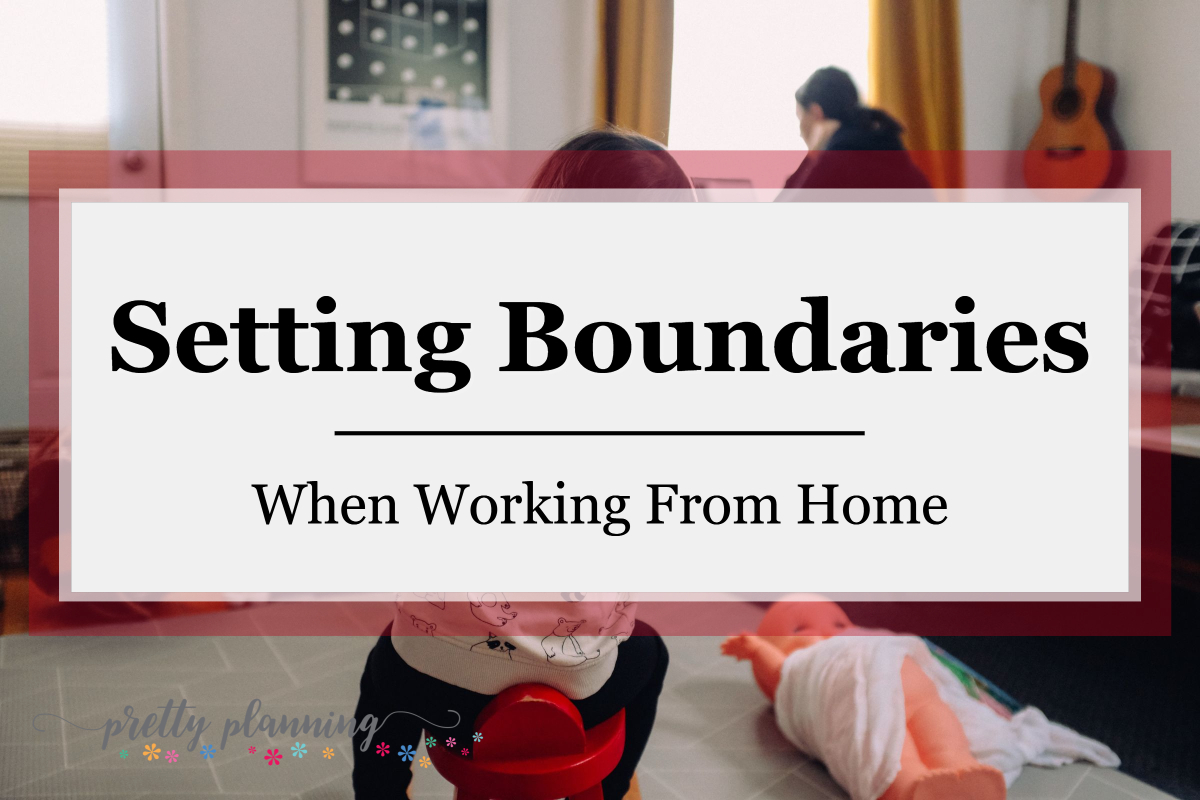How to Set Boundaries When Working from Home

Working from home sounds like a dream - no commute, comfy clothes, and complete control over your schedule. But without clear boundaries, work can easily start creeping into your personal life. One moment, you’re answering a quick email at 9 PM, and before you know it, your home feels like a 24/7 office.
Sound familiar? You’re not alone.
Setting boundaries when working from home is essential for your productivity, mental well-being, and work-life balance.
The good news? With a few simple strategies, you can take back control of your time and space - without feeling guilty about it.
Here’s how to set (and actually stick to!) boundaries while working from home.
Define Your Work Hours
One of the biggest mistakes people make when working from home is not having clear work hours. It’s tempting to start late, take long breaks, or keep working “just a little longer.” But without a schedule, work can spill into your evenings and weekends before you realize it.
✔ Set specific work hours – Choose start and end times just like you would in a traditional office. For example, “I work from 9 AM to 5 PM, Monday to Friday.”
✔ Communicate your hours – Let your coworkers, clients, and even family know when you’re available and when you’re “off the clock.”
✔ Use an alarm or calendar reminder – Set a reminder at the end of your workday to signal that it’s time to log off and step away.
Example: If a coworker messages you at 7 PM, instead of responding right away, wait until the next workday. Over time, people will respect your boundaries because you’ve made them clear.
Create a Dedicated Workspace
When your dining table, couch, or bed doubles as your office, it’s hard to mentally separate work from home life. A dedicated workspace can help you switch into work mode during the day and disconnect when the workday is over.
✔ Set up a specific work area – It doesn’t have to be a separate room; even a small desk in the corner can work!
✔ Use physical cues – Keep work-related items (laptop, planner, notebooks) only in your workspace.
✔ Shut down your workspace at the end of the day – Turn off your computer, close your notebook, and leave your workspace just like you would leave an office.
Example: If you work from the kitchen table, pack up your laptop and put it away in a drawer at the end of the day. This small action signals to your brain that work is done.
Set Boundaries with Family and Roommates
One of the biggest challenges of working from home? Other people thinking you’re always available. Whether it’s your spouse asking for help, kids needing attention, or a roommate stopping by to chat, distractions can kill your focus.
✔ Have a “do not disturb” signal – A closed door, wearing headphones, or even a simple sign can let others know you’re in work mode.
✔ Set clear rules – Let family and roommates know your work hours and ask them to treat it like you’re at an actual office.
✔ Schedule “family time” or breaks together – This way, they know they’ll get your attention after work, so they’re less likely to interrupt you.
Example: If your kids keep barging in, tell them, “When my office door is closed, it means I’m working. But when it’s open, you can come talk to me.” Over time, they’ll learn to respect that boundary.
Learn to Say “No” (Without Feeling Bad)
When working from home, you might feel pressure to take on extra tasks, be always available, or say yes to everything. But constantly saying yes can lead to overworking, burnout, and frustration.
✔ Practice polite but firm responses – Saying no doesn’t have to be rude! Try phrases like:
- “I’d love to help, but I’m currently booked up with work.”
- “I’m not available right now, but I can check in tomorrow.”
✔ Set expectations early – If coworkers expect you to work late, make it clear that you log off at a certain time.
✔ Prioritize your workload – Focus on your top tasks first and don’t take on more than you can handle.
Example: If a friend asks you to help them move on a Tuesday afternoon, say, “I wish I could, but I have work. Let’s catch up in the evening instead!”
Take Real Breaks (Not Just Scrolling on Your Phone!)
It’s easy to skip breaks or work through lunch, but doing so leads to exhaustion and lower productivity. Breaks aren’t a waste of time - they help you recharge so you can work better.
✔ Schedule your breaks – Set alarms to remind yourself to step away from work.
✔ Do something non-work-related – Walk outside, stretch, read a book, or have a snack.
✔ Step away from screens – Avoid social media, which can make your brain feel even more cluttered.
Example: Instead of eating lunch at your desk while answering emails, step away, eat in another room, and take 15 minutes to breathe. You’ll feel much more refreshed when you return.
Log Off at the End of the Day
When your office is at home, it’s tempting to keep working past your set hours - just one more email, just one more task. But constantly staying “on” can lead to burnout.
✔ Have a shutdown routine – Close your laptop, turn off notifications, or even say out loud, “Work is done for today!”
✔ Do a non-work activity after work – Take a walk, cook dinner, or read a book to shift your mindset.
✔ Respect your own boundaries – Just because you CAN work late doesn’t mean you should.
Example: If a client emails you at 8 PM, resist the urge to reply immediately. Instead, answer it the next morning when you’re officially “at work.”
Boundaries = Work-Life Balance
Setting boundaries when working from home isn’t selfish - it’s necessary. Without them, work can take over your life, leaving you exhausted and stressed.
✅ Define your work hours and communicate them clearly.
✅ Create a dedicated workspace to mentally separate work from home life.
✅ Set boundaries with family, friends, and coworkers.
✅ Learn to say no when you need to.
✅ Take real breaks to recharge.
✅ Log off at the end of the day—your personal time matters!
By setting clear boundaries, you’ll be more productive, less stressed, and actually enjoy the flexibility that working from home offers.
